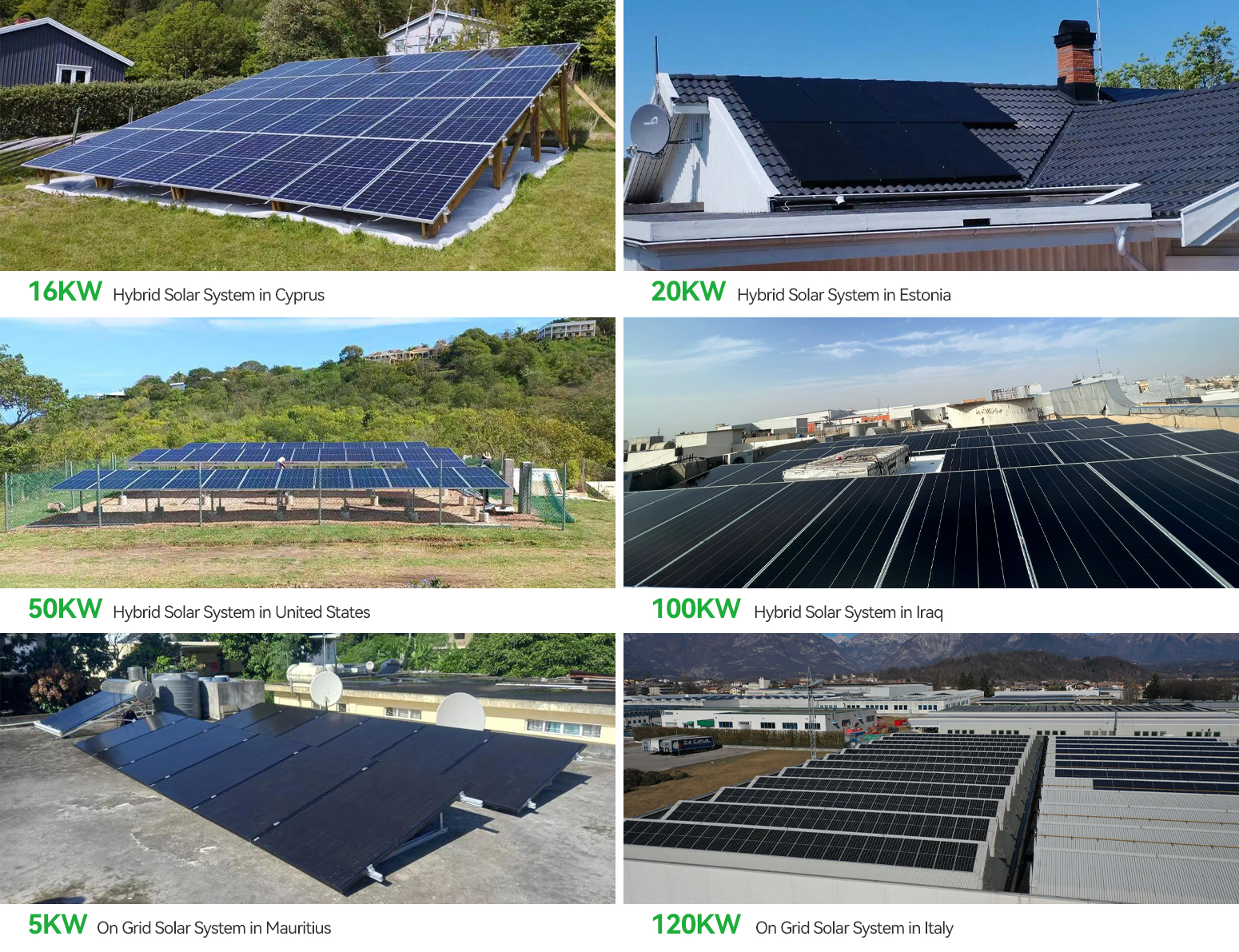Model:
STD-30KW-HYSystem Power:
30KwCertification:
CE/TUVWarranty:
5 Years
SUNDTA 30kw Commercial Solar System
| 30KW Hybrid Solar Power System Configuration | |||
| Item | Model | Description | Quantity |
| 1 | Solar Panel | Half cut mono sliver frame 560w solar panel | 68 pcs |
| 2 | Combiner Box | Optional | 1 pc |
| 3 | Lithium Battery or Lead Acid Battery | 5.12Kwh Rack Mounted Battery | 12pcs |
| 4 | Hybrid Inverter | 30KW | 1 pc |
| 5 | Mounting Support | Roof/Ground | 1 set |
| 6 | Cable | 4mm² PV cable | 400m |
| 7 | Connector | Solar Connector | 16 pairs |
| Tools Bag | Solar Installation tools | 1 set | |
A 30KW (kilowatt) solar system is a sizable solar power setup that can generate a significant amount of electricity.
Here are some features and considerations for a 30kW solar system:
Power Generation: A 30kW solar system typically consists of a substantial number of solar panels designed to generate around 30,000 watts of DC power in optimal conditions.
Solar Panel Quantity: The exact number of solar panels required for a 30kW system depends on the wattage of the individual panels. Assuming you're using 300-watt panels, approximately 100 solar panels would be needed (30,000 divided by 300).
Available Space: A 30kW solar system requires a substantial amount of space, typically ranging from 2,000 to 3,000 square feet (186 to 279 square meters) depending on the solar panel efficiency and layout.
Energy Production: The energy production of a 30kW solar system depends on factors such as location, climate, shading, and panel orientation. On average, a 30 kW solar system can generate 36,000 to 48,000 kilowatt-hours (kWh) of electricity per year, depending on these variables.
Electricity Offset: A 30kW solar system can offset a significant portion of your electricity consumption, making it suitable for commercial buildings, larger homes, or small businesses with substantial energy needs.
Environmental Benefits: A 30kW solar system can help reduce greenhouse gas emissions by utilizing clean, renewable energy. Over its lifespan, it can mitigate a significant amount of carbon dioxide emissions compared to conventional electricity sources.


Related Tags :